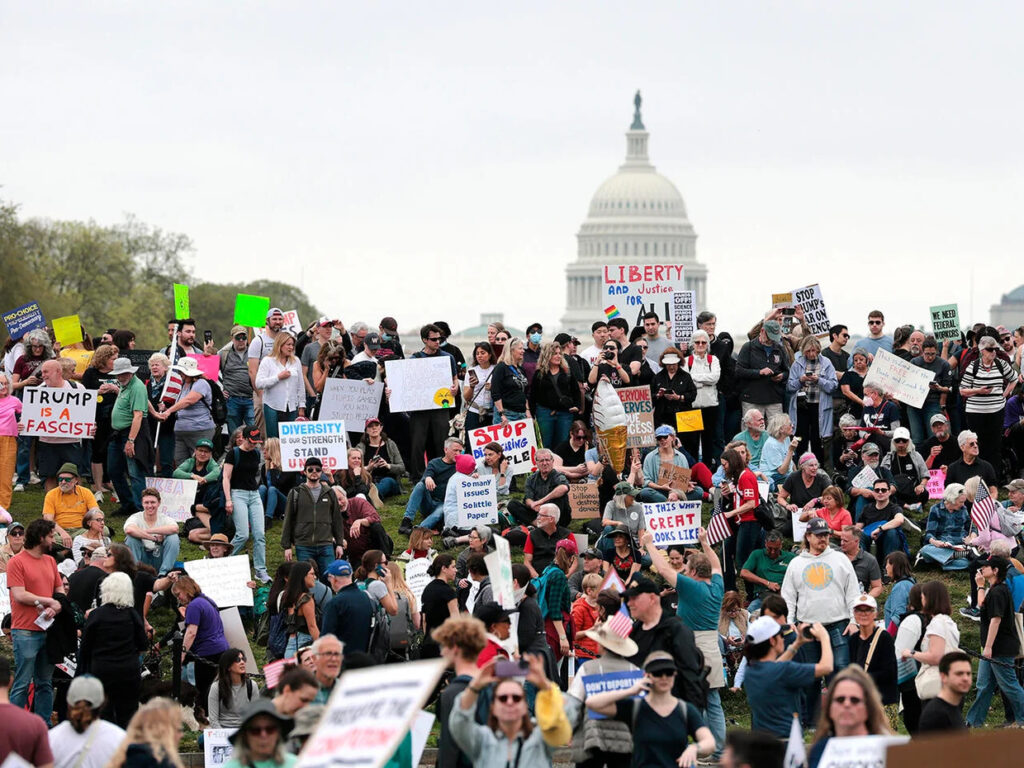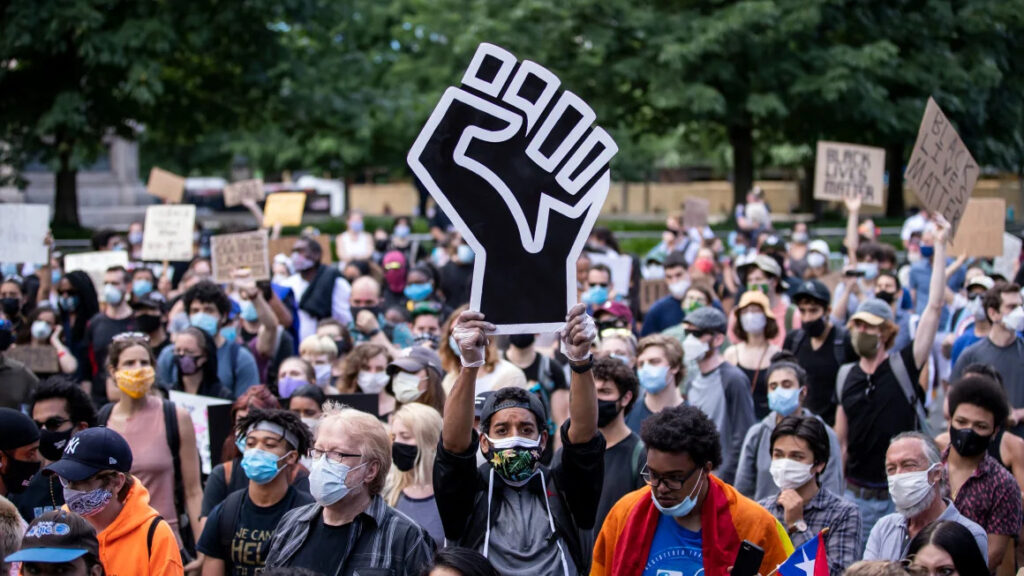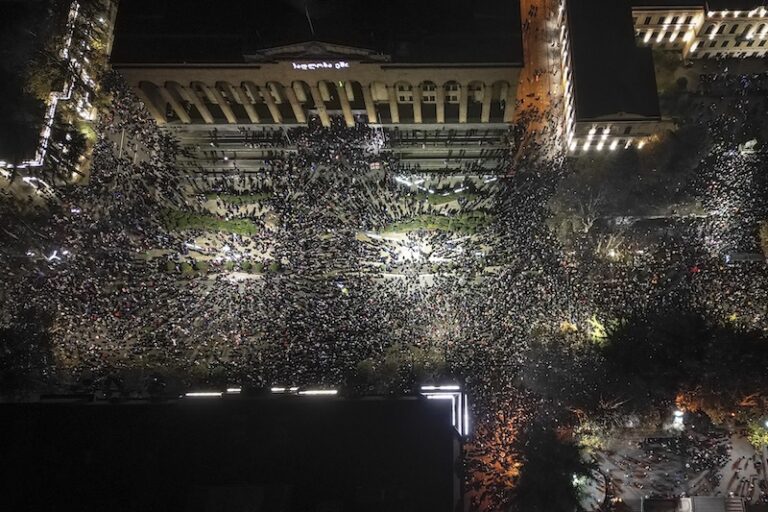
“Let’s get in good trouble,” Sen. Cory Booker declared, closing out his 25-hour, 5-minute protest against the Trump administration. Regardless of its legislative impact, the protest struck me as a powerful moment in American politics: a Black senator breaking the record previously held by Strom Thurmond, a racist who had filibustered to block the Civil Rights Act. That symbolism is iconic, but it also raises the question: how much can a protest truly accomplish when the systems in power remain unshaken?
We’re living in an age defined by protest. Between 2006 and 2020, protest movements more than tripled globally. It’s a promising sign of democratization but also a sobering reminder of just how much is broken. There simply isn’t enough time in one lifetime to fight every battle. In the age of instant information and constant crises, protest has become both a necessity and a daily occurrence.
It often feels like we are shouting into the void. Protests are routinely silenced, ignored, and disrupted. In a country founded on the principle of the people’s voice — where political dissent is a constitutional right — it is terrifying to consider whether our demonstrations are losing their potency.
We grew up with the stories of great protests shaping America, from the suffragettes to the civil rights marches of the 1960s to the anti-Vietnam War movements. But today, we’re burning out, caught between wanting change and wondering if it’s even possible. We protest voter suppression, yet our leaders remain intransigent. We demand police reform, yet budgets for policing continue to grow. We march for climate action while billionaires charter rockets to space. Even when we show up in record numbers, the system often refuses to budge an inch.
In hopes of finding reassurance that protests can be effective, I set out to understand what makes one successful.
First, it’s crucial to define the protest: What do you want to achieve? What are the specific, actionable outcomes you’re demanding? Without clear demands, a protest becomes little more than an expression of anger. Change is impossible if we can’t articulate exactly what we’re fighting for.
Second, how are you protesting? Is it a strike? A march? A boycott? Choosing the medium is essential to achieving your goals. If you want to change policy, perhaps a march is better. If you seek to end unfair labor practices, boycotting could have a stronger impact.
Next, let’s consider the scale. In a study, Harvard political scientist Erica Chenoweth found that no nonviolent protest involving more than 3.5 percent of the population has ever failed. In the United States, that magic 3.5 percent figure translates to almost 12 million people. Achieving a protest of such scale requires cohesion, great logistics, and organization. Such demonstrations are a rare occurrence in recent U.S. history, except for the B.L.M. movement, which saw an estimated 26 million people participating at some point throughout the summer. In a country as vast as the U.S., ensuring 12 million protestors are aligned around a single, unified goal is a tall order. Maybe our protesting isn’t working because we don’t have enough voices.

We must also consider the credibility of protesting today. Atlantic contributor Zeynep Tufekci wrote, “Protests are signals: ‘We are unhappy, and we won’t put up with things the way they are.’ But for that to work, the ‘We won’t put up with it’ part has to be credible.” In today’s world, protests sometimes lack that credibility. Large protests can be organized in a matter of months, even a few weeks. A Facebook page can bring millions onto the streets, but it doesn’t necessarily carry the same weight it would have when organizing was far more challenging.
Our ease of organizing — and abandoning — protests may be our downfall. For comparison, the historic 1963 March on Washington took over a decade to plan and months to coordinate. The effort alone made the march a powerful statement to those in power. Tufekci notes, “something that’s easy to organize is a mere question mark for the future: Maybe it will go somewhere, but maybe it won’t.” In June 2020, I saw firsthand how easy it was to check Instagram, find a protest in my hometown, drive over, participate for a few hours, and return to a comfortable home. But real change is a lot harder.
This credibility is inherently rooted in cost — to us and the institutions we are challenging. Both are necessary for change. Protesting universities for a ceasefire in the Israel-Hamas War now comes at a great personal sacrifice. However, for the institutions, the cost remains minimal. Admission demand for universities like Columbia or N.Y.U. remain high: they will find someone quieter to replace dismissed students. In contrast, widespread boycotts, like those of Target or Starbucks, require less personal sacrifice but can exert meaningful economic pressure.
And yet, even when protests meet all the necessary criteria, we are facing another crisis in our protests. As the personal cost of dissent rises and institutional accountability remains elusive, the ways we protest today are unsustainable. Our political culture, driven by mutual resentment, leaves us too exhausted to protest effectively. Shouting into the void might feel cathartic, but if we go home with no hope for tomorrow, what’s the point?
Yes, loud activism must persist. We need walkouts, street shutdowns, encampments, speeches in the Senate, and boycotts. Bold, visible acts of resistance are vital to challenging the foundations of injustice and demanding change. But, for those of us struggling to face the news every day, who only manage one protest a month and have no idea how to rally 12 million people behind one cause, let alone numerous others we are fighting for, we can still be effective by embracing soft activism.
Defined as various forms of activism that employ subtle, non-confrontational methods to promote change, soft activism can be anything from focusing on ethical consumption to writing your emails without ChatGPT. It’s about being intentional about your advocacy, not taking the easiest path but the one that aligns with your values and causes. While hard activism drives direct action, soft activism nurtures the joy and sense of belonging that sustain movements over time. Soft activism allows us to remain engaged without burning out, and it helps build a foundation of support and solidarity that sustains movements in the long run. Every small action, every conversation, every opinion written, and every act of kindness can contribute to a broader struggle.
Yes, that means stopping your orders from Amazon. Trust me, there are more ethical alternatives out there. Try not to order online at all! Bring a reusable bag when you go shopping, and save the planet by eating in season. Go thrifting and donate your clothes. Turn off your lights when you leave the house. Turn off your phone and focus on being alive. Soft activism is the protest through living.
No, it probably won’t change much right away. But collective action — removing ourselves from toxic spaces and truly thinking about where we put our time, thoughts, and money — can shift the status quo in the long term. After all, the 99 percent is a hell of a lot bigger than the 1 percent, and if we can have a goal and stick to it, together, our voices will eventually force change.
We just have to keep getting in good trouble.
The Zeitgeist aims to publish ideas worth discussing. The views presented are solely those of the writer and do not necessarily reflect the views of the editorial board.


